
Concept explainers
(a)
Interpretation:
Lactic acid has to be classified among the given options.
Concept Introduction:
Carbonyl groups are the one which contain a double bond between carbon and oxygen atom.
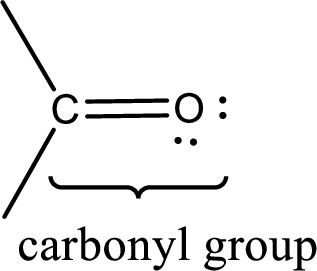
If a hydroxyl group is attached to a carbonyl group means it is known as carboxyl group. This can be represented as shown below,
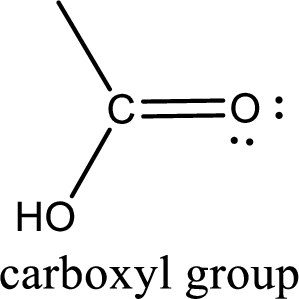
Apart from carboxyl group, there can be other functional group also that is present in the
(b)
Interpretation:
Glutaric acid has to be classified among the given options.
Concept Introduction:
Carbonyl groups are the one which contain a double bond between carbon and oxygen atom. Aldehydes and ketones possess this carbonyl functional group in it. The structural representation of a carbonyl group can be given as shown below,
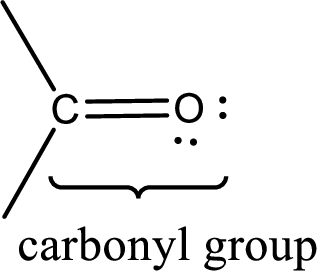
If a hydroxyl group is attached to a carbonyl group means it is known as carboxyl group. This can be represented as shown below,
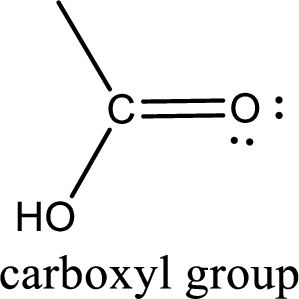
Apart from carboxyl group, there can be other functional group also that is present in the carboxylic acid. They are known as polyfunctional carboxylic acids. These occur naturally also. Some of the important type of polyfunctional carboxylic acids are hydroxy acids, keto acids, and unsaturated acids.
(c)
Interpretation:
Valeric acid has to be classified among the given options.
Concept Introduction:
Carbonyl groups are the one which contain a double bond between carbon and oxygen atom. Aldehydes and ketones possess this carbonyl functional group in it. The structural representation of a carbonyl group can be given as shown below,
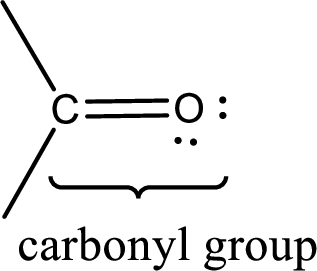
If a hydroxyl group is attached to a carbonyl group means it is known as carboxyl group. This can be represented as shown below,
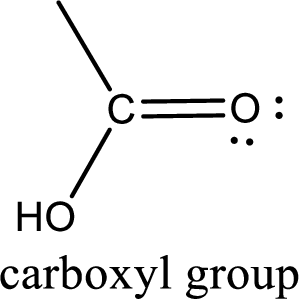
Apart from carboxyl group, there can be other functional group also that is present in the carboxylic acid. They are known as polyfunctional carboxylic acids. These occur naturally also. Some of the important type of polyfunctional carboxylic acids are hydroxy acids, keto acids, and unsaturated acids.
(d)
Interpretation:
Pyruvic acid has to be classified among the given options.
Concept Introduction:
Carbonyl groups are the one which contain a double bond between carbon and oxygen atom. Aldehydes and ketones possess this carbonyl functional group in it. The structural representation of a carbonyl group can be given as shown below,
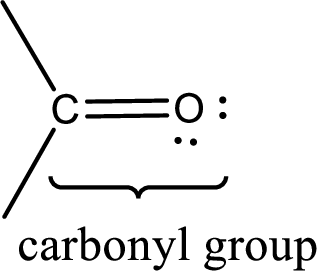
If a hydroxyl group is attached to a carbonyl group means it is known as carboxyl group. This can be represented as shown below,
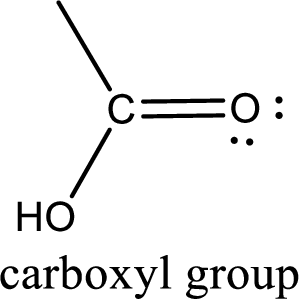
Apart from carboxyl group, there can be other functional group also that is present in the carboxylic acid. They are known as polyfunctional carboxylic acids. These occur naturally also. Some of the important type of polyfunctional carboxylic acids are hydroxy acids, keto acids, and unsaturated acids.
Want to see the full answer?
Check out a sample textbook solution
Chapter 16 Solutions
Bundle: General, Organic, and Biological Chemistry, 7th + OWLv2 Quick Prep for General Chemistry, 4 terms (24 months) Printed Access Card
- What is the physical state (solid, liquid, or gas) of each of the following carboxylic acids at room temperature? a. Oxalic acid b. Decanoic acid c. Hexanoic acid d. Benzoic acid Classify the two carboxylic acids in each of the following pairs as (A) both dicarboxylic acids, (B) both monocarboxylic acids, or (C) one dicarboxylic and one monocarboxylic acid. 1. Glutaric acid and valeric acid 2. Adipic acid and oxalic acid 3. Caproic acid and formic acid 4. Succinic acid and malonic acid Each of the following acids contains an additional type of functional group besides the carboxyl group. For each acid, specify the non-carboxyl functional group present. 9. Acrylic acid 10. Lactic acid 11. Maleic acid 12. Glycolic acid 13. Fumaric acid 14. Pyruvic acid 15. Malic acid 16. Tartaric acid What type of chemical reaction does carboxylic acid undergo in the following situations? 17. synthesis of methyl salicylate 18. reaction with a strong alkali 19. occurs in aqueous solution 21. release of…arrow_forwardCarboxylic Acid Alcohol Ester (Condensed Structural Formula) Odo Formic acid Ethyl alcohol Rum Acetic acid Ethyl alcohol Fruity Acetic acid Isopentyl (isoamyl) alcohol Banana Acetic acid Octyl alcohol Orange Propionic acid Ethyl alcohol Pineapplearrow_forwardWhat is porphyrin ?arrow_forward
- How Chemists Activate Carboxylic Acids.arrow_forwardFormation of Esters. Odor of ester Chemical Equation:arrow_forwardcarboxylic acids react with water to form sodium hydroxide True False carboxylic acids react with bases such as sodium hydroxide to form carboxylate salts and water True False carboxylic acids are strong acids that dissociate completely to form carboxylate ions in water True Falsearrow_forward
- why n-hexanol has higher boiling point than n-hexane. why acetic acid is more acidic then butanoic acid. why sugar is soluble in water in terms of their molecular interactions.arrow_forward1) To identify which contains more acid vinegar or lemon juice neutralization with sodium hydroxide can be used. Explain how. 2) The long filaments making up the thread of woven synthetic fabrics are likely polyesters. Describe the special characteristic that the alcohol and carboxylic acid must have so that they can react with each other to produce such long filaments.arrow_forwardRefer to the structures of carboxylic acid and derivatives. Which of the following statements is TRUE? Compound A is the most reactive. The second most reactive is compound B Compound D is the least reactive Compound E is the most reactive.arrow_forward
- Choose the products that can be made when using an ester as the starting material. You may assume that necessary reagents are present. Choose all that apply. carboxylic acid acid anhydride amide ester alkenearrow_forwardexplain the structures and properties of functional group :carboxylic acid and aminoarrow_forwardDefine the structure of a carboxylic acid ?arrow_forward
 Organic And Biological ChemistryChemistryISBN:9781305081079Author:STOKER, H. Stephen (howard Stephen)Publisher:Cengage Learning,
Organic And Biological ChemistryChemistryISBN:9781305081079Author:STOKER, H. Stephen (howard Stephen)Publisher:Cengage Learning, General, Organic, and Biological ChemistryChemistryISBN:9781285853918Author:H. Stephen StokerPublisher:Cengage Learning
General, Organic, and Biological ChemistryChemistryISBN:9781285853918Author:H. Stephen StokerPublisher:Cengage Learning World of Chemistry, 3rd editionChemistryISBN:9781133109655Author:Steven S. Zumdahl, Susan L. Zumdahl, Donald J. DeCostePublisher:Brooks / Cole / Cengage Learning
World of Chemistry, 3rd editionChemistryISBN:9781133109655Author:Steven S. Zumdahl, Susan L. Zumdahl, Donald J. DeCostePublisher:Brooks / Cole / Cengage Learning Chemistry for Today: General, Organic, and Bioche...ChemistryISBN:9781305960060Author:Spencer L. Seager, Michael R. Slabaugh, Maren S. HansenPublisher:Cengage Learning
Chemistry for Today: General, Organic, and Bioche...ChemistryISBN:9781305960060Author:Spencer L. Seager, Michael R. Slabaugh, Maren S. HansenPublisher:Cengage Learning
 Introductory Chemistry: An Active Learning Approa...ChemistryISBN:9781305079250Author:Mark S. Cracolice, Ed PetersPublisher:Cengage Learning
Introductory Chemistry: An Active Learning Approa...ChemistryISBN:9781305079250Author:Mark S. Cracolice, Ed PetersPublisher:Cengage Learning





